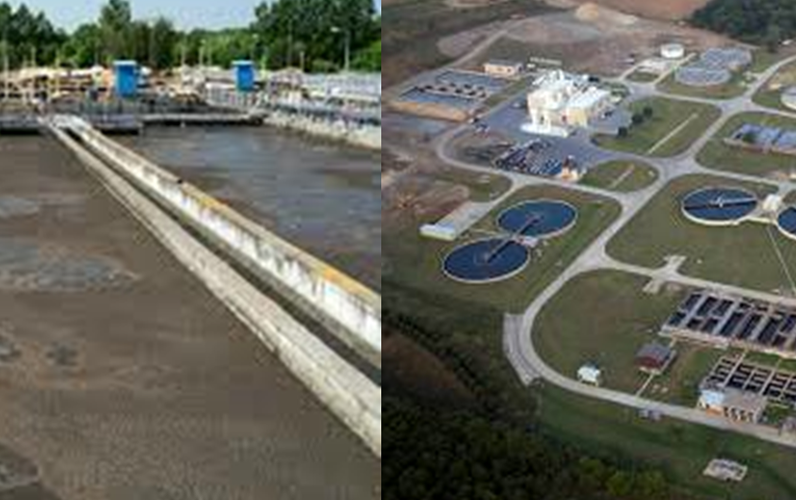Complex modern waste streams are non-homogeneous, a mix of materials. Our process takes each specific waste material and pretreats it prior to converting it to micro- and nanocellulose.

Increases the economic value of recovered resources.

Analyzing, smart sorting, and pre-treatment.

A complete solution and a key step in any recycling activity.

Ready for the next step in the waste mining process.
Complex modern waste streams are non-homogeneous, a mix of materials. Our process takes each specific waste material and pretreats it prior to converting it to micro- and nanocellulose.

Harvest Nano built a process to harvest and extract micro and nanocellulose from human sewage, reimagining wastewater as a renewable resource. We transform sewage solids into high-value, biodegradable micro and nanocellulose.
Harvest Nano is reimagining wastewater as a renewable resource by transforming sewage sludge into high-value, biodegradable nanocellulose.
Every person produces over 80 gallons of wastewater per day, and most treatment plants focus only on removing harmful solids — not reusing them. Yet wastewater is rich in cellulose from paper, fabrics, and plant-based products that remain intact through treatment.
Our proprietary technology integrates directly into wastewater treatment plants (WWTPs) to extract this overlooked material before it becomes hazardous sludge. The result: nanocellulose — a strong, sustainable material used in packaging, coatings, bioplastics, and more.
This system reduces sludge formation by up to 50%, cuts operating costs, removes over 50% of PFAS (“forever chemicals”), and lowers environmental impact. It also opens up new revenue streams and makes WWTPs eligible for carbon credits — all while helping cities turn waste into value.
.png)
Waste byproducts from wood processing or furniture waste, like sawdust, are often treated as a low-value material. Our technology upcycles this wood and furniture waste into durable, high-performance micro and nanocellulose materials.
Our technology repurposes sawdust — once treated as low-value waste — into high-performance, sustainable materials by blending it with nano cellulose. This process enhances the structural strength, moisture resistance, and durability of the material, making it ideal for applications like flat-pack furniture, decorative panels, and packaging.
Nano cellulose, derived from natural sources, acts as a reinforcing binder when mixed with purified sawdust. Through low-energy molding and compression, we produce eco-friendly boards and components that reduce dependence on virgin wood and plastics.
This approach not only diverts wood waste from landfills but also reduces carbon emissions and supports circular economy practices in the furniture industry. By transforming byproducts into new materials, we promote sustainable design without compromising quality or performance.
.png)
Dairy farm waste is the nutrient-rich wastewater and organic-rich effluent generated by livestock operations on dairy farms.
Harvest Nano is revolutionizing the way dairy farms handle waste by converting wastewater biosolids into high-value nanocellulose — a sustainable material used in packaging, bioplastics, and advanced manufacturing.
Dairy farms generate large volumes of nutrient-rich wastewater as a byproduct of livestock operations. Traditionally seen as a disposal challenge, this waste now becomes an economic asset.
Our technology allows dairy farms to reduce the environmental burden of waste removal, lower hauling and treatment costs, and unlock new revenue streams through carbon credits and sustainable product creation. This process not only supports farm compliance with environmental regulations but helps position farms as leaders in clean innovation.
We call it “waste mining” — turning agricultural byproducts into salable goods that meet the rising demand for renewable and biodegradable materials.
Nanocellulose derived from dairy wastewater is lightweight, non-toxic, and remarkably strong — ideal for compostable packaging, 3D printing, and next-gen bioplastics.
.png)
Paper waste and dense, fibrous residues, and leftover pulp are generated in large volumes from offices and paper manufacturing. We turn these byproducts (which are often costly and environmentally challenging to dispose of) into valuable micro and nano material.
Harvest Nano converts leftover pulp from food and paper industries into high-performance nanocellulose — giving a second life to what was once considered industrial waste.
Pulp waste is generated in large volumes during food processing and paper manufacturing. These dense, fibrous residues are often costly to manage and environmentally challenging to dispose of.
Our technology transforms this pulp into nanocellulose, a biodegradable material with applications in packaging, bioplastics, and coatings. By extracting value from this overlooked byproduct, we help industries reduce landfill use, lower operational costs, and meet sustainability goals.
Through this process, pulp waste becomes a renewable input — no longer a disposal issue, but a source of clean innovation and circular economic value.
.png)
Harvest Nano is leading the charge in textile circularity by transforming post-consumer textile waste into sustainable, high-value products.
Harvest Nano is leading the charge in textile circularity by transforming post-consumer cotton and synthetic fabrics into sustainable cellulose and nanocellulose.
In partnership with Goodwill Industries of West Michigan, we’ve launched Michigan’s first textile-to-nanocellulose recycling facility — converting non-saleable garments into eco-friendly materials for packaging, automotive, construction, and more.
Using patented technology, we extract high-value nanocellulose from textile waste — a material four times stronger than stainless steel, yet lightweight and biodegradable. The process supports landfill diversion, creates jobs, and opens new revenue streams across industries.
This partnership proves that textile waste isn’t the end of the line — it’s the beginning of a more sustainable, circular future.
.png)
Farming generates vast volumes of cellulose rich waste, including crops (cotton, soybean, corn, etc.,) residues like straw, and husks, and livestock waste like manure and bedding. It’s underutilized biomass that presents a disposal challenge – but also an opportunity.
Agriculture and livestock industries produce vast volumes of waste annually, rich in cellulose, hemicellulose, and organic solids. From crop residues and fruit peels to livestock bedding and manure blends, these underutilized materials often become a disposal challenge. Key Challenges for waste owners include high disposal costs, methane and ammonia emissions, nutrient runoff and water pollution, stricter regulations on land application and composting. cellulose-rich biomass.
Crop & Plant-Based Waste Includes straw, husks, stalks, shells, peels, sugarcane bagasse, corn stover, cotton stalks, fruit and vegetable trimmings from processing and packaging.
Livestock & Mixed Waste Includes animal manure blended with/ without straw or sawdust, spent bedding, slurry and digestate from biogas operationsMost agricultural waste streams, especially from plants, contain significant amounts of cellulose, the main structural component in plant cell walls.
Rather than letting this potential go to waste, cellulose can be extracted and converted into nano cellulose, offering economic and environmental benefits.Nano cellulose is an advanced biomaterial derived from natural cellulose. It features exceptional strength-to-weight ratio, high surface area and binding ability, biodegradability and renewability, and have applications across packaging, agriculture, electronics, composites, cosmetics, and more.Harvest nano has developed customized modular systems and licensed technology that turns formerly difficult-to-handle waste into a valuable product, helping farmers, co-ops, and processors reduce costs and generate new revenue streams.
Environmental and Economic Benefits include:
• Waste Reduction: Minimize disposal and landfill volumes
• Emission Control: Cut methane and ammonia emissions from manure
• Water Protection: Prevent nutrient leaching and runoff
• Sustainable Material Supply: Feed high-growth sectors with green alternatives
• Regulatory Compliance: Align with tightening waste and carbon regulations
Relevant Agriculture waste:
• Farm cooperatives and agri-processors
• Manure management facilities
• Food and produce packers
• Bioenergy and composting operators
• Sustainable packaging and material manufacturers
Agricultural and livestock waste are not problems to be managed; just resources to be unlocked. Harvest Nano offers the engineering, technology, and support needed to make this transition a reality.
.png)
Also known as industrial effluent, this is water discharged from facilities like breweries, paper mills, and food processors. These waste streams are often rich in organic solids and cellulose, creating a costly liability for businesses.
Industrial wastewater, also known as industrial effluent or process wastewater, is water that is discharged from industrial facilities after use in various processes. It's characterized by a wide range of pollutants depending on the specific industry and its operations.
Industrial wastewater from a variety of sectors represents a growing environmental and economic challenge. In many industrial wastewater streams, especially from pulp, fruit, vegetables, and grain processing, cellulose makes up most of the solid waste content. These waste streams are often rich in organic solids, especially cellulose, and are typically disposed of through costly treatment systems, land application, or discharge—leading to pollution, compliance risks, expenses and environmental concern.
Waste owners facing Issues like environmental liability due to nutrient and organic loading, high disposal and treatment costs, underutilized resource potential, increasing regulatory pressure to reduce waste and carbon footprints.
With harvest nano green technology and patent portfolio, these cellulose byproducts can be sorted, pretreated and transformed into high-value nano cellulose, turning a costly liability into a profitable resource.
Relevant Industrial waste:
• Food processors (sauces, jams, salads, pastes, juices)
• Breweries and beverage makers
• Pulp and paper mills
• Plant-based food manufacturers
• Fruit and vegetable canneries
• Agricultural processing plants
This industrial waste can now be pretreated, extracted and refined into nano and micro cellulose — a high-performance futuristic biomaterial with growing global demand and Increasing used in sectors such as packaging, construction, 3D printing, electronics, and cosmetics.
Benefits from collaborating with Harvest Nano:
• Reduce wastewater treatment costs (and reduction of sludge management).
• Meeting the environmental discharge standards.
• Generating new revenue from a byproduct.
• Support ESG goals and circular economy models.
• Easy integration into existing plants, small footprint.
Industrial wastewater is not just waste, it's a resource. With Harvest Nano technology, cellulose-rich waste streams can be transformed into one of the most valuable materials of the future: nano cellulose. Harvest Nano provides the tools, systems, and expertise to unlock this potential, helping industries turn compliance costs into clean, profitable innovations.
.png)
Waste is generated from human sources during long-duration space missions, where the ability to locally manufacture parts and waste management is a critical challenge. Our technology transforms this waste into high-performance nanocellulose for use both in space and on Earth.
Harvest Nano is pioneering the transformation of human and aerospace waste into high-performance nanocellulose — unlocking sustainable material solutions for both Earth and space exploration.
In long-duration space missions, managing human waste is a critical challenge. Harvest Nano's technology addresses this by extracting cellulose-rich materials from waste, converting them into nanocellulose — a lightweight, biodegradable material with exceptional strength. This innovation not only supports closed-loop life support systems in space but also offers sustainable applications on Earth.
Nanocellulose, derived from recycled waste, is four times stronger than stainless steel and twice as strong as carbon fiber. Its applications span from aerospace components to packaging materials, contributing to reduced environmental impact and promoting a circular economy.
By reimagining waste as a resource, Harvest Nano is advancing sustainable practices in aerospace and beyond, fostering innovation that benefits our planet and future space endeavors.
.png)
Seasonal organic waste consists of tons of fallen trees, leaves, and yard debris that are collected. This biomass is rich in cellulose, making it an untapped resource for producing sustainable micro and nano materials.
Harvest Nano transforms seasonal yard waste — like fallen leaves — into valuable nanocellulose materials that support circular economy goals and reduce organic landfill overflow.
Every autumn, tons of leaf litter and yard debris are collected and often discarded through burning, dumping, or composting — all of which come with environmental downsides. But this biomass is rich in cellulose, making it an untapped resource for sustainable material production.
Our process recovers this waste and converts it into high-performance nanocellulose that can be used in biodegradable packaging, molded goods, and green construction materials.
By redirecting yard waste into industrial applications, we not only reduce emissions and waste management costs, but also help municipalities and landscapers unlock new environmental value from a widely available resource.

Delivering the materials critical for sustainable life on Earth – and the advanced materials that enable future missions into space.
See if your territory/field of use is open. Now is the time to act!
Contact Us